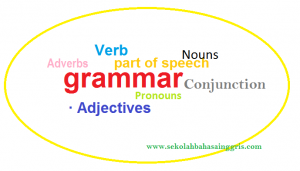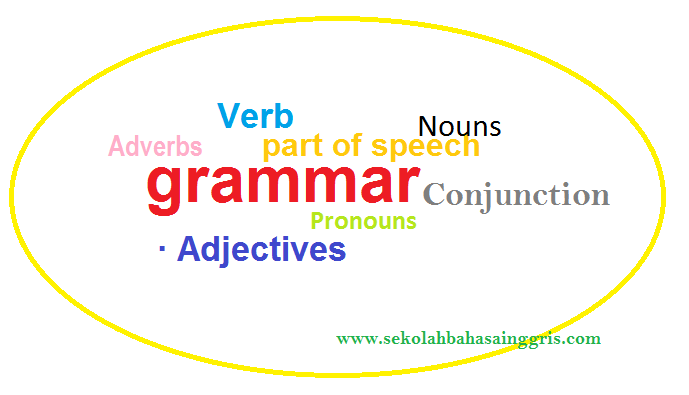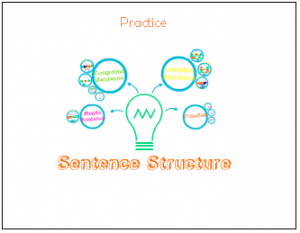Pengertian,Rumus Dan Contoh Conditional Sentence Tipe 1 2 3 Dan Belajar Conditional Sentences Terlengkap
Materi Dikutip Dari BUKU : MEGA BANK OF GRAMMAR – Halo sahabat SBI yang baik hatinya, kali ini kita akan sama-sama belajar mengenai Conditional sentence, baik tipe 1, 2, ataupun 3. Buat yang masih bingung dengan conditional sentence, simak baik-baik penjelasan dibawah ini.
Pengertian conditional sentences
Conditional sentence (kalimat pengandaian) adalah kalimat yang mengandaikan suatu keinginan, harapan, rencana, dan Iain-lain yang masih bisa terjadi [possible), sesuatu yang tak terpenuhi/angan-angan (unreal), dan tak ter- wujud (impossible).
Contoh:
- If I work hard, I will have a lot of money. (Jika aku bekerja keras, aku akan memiliki banyak uang)
- If I study English, I will get good score in TOEFL. (Jika aku belajar bahasa Inggris, aku akan mendapatkan nilai yang bagus dalam tes TOEFL)
- If I had a lot of money, I would buy an expensive car. (Jika aku memiliki banyak uang, aku akan menibeli mobil yang mahal)
- If i were you, I would work in that foreign company. (Jika aku jadi kamu, aku akan bekerja di perusahaan asing itu)
- If I had got high score in the national examination, I would have studeid in a state university. (jika aku mendapatkan nilai yang bagus di ujian nasional, aku akan belajar disebuah perguruan tinggi negeri)
- We would have got the ticket if we had come earlier. (Kita akan mendapatkan tiket jika kita datang lebih awal.)
Catatan:
- Terdapat dua bagian di dalam struktur kalimat pengadaian. yaitu mduk Kalimat (main clause) dan anak kalimat (dalam bentuk if clause).
Contoh:
If I work hard, 1 will have a lot of money.
If clause main clause
- Struktur atau posisi induk dan anak kalimat pada kalimat pengandaian dapat diubah-ubah.
Contoh:
- If I had got high score in the national examination, 1 would have entered state university.
- 1 would have entered state university If I had got high score in the national examination.
Catatan:
Ketika posisi induk kalimat berada di depan, maka tidak perlu adanya pemisah berupa tanda koma (,) di antara induk dan anak kalimat.
Ketika posisi anak kalimat (if clause) berada di depan, maka digunakan pemisah berupa tanda koma (,).
KINDS OF CONDITIONAL SENTENCES
Kalimat pengandaian (conditional sentence) terbagi menjadi tiga, yaitu:
Kalimat pengandaian tipe 1 (type 1)
Pola kalimat pengandaian tipe 1:
If + subject + VI (Simple Present Tense)+Subject + will + VI (Simple Present tense)
atau
If + subect + (be) present + adjective/noun+Subject + will be + adjective/noun
Contoh:
If I study hard, I will pass the final examination. (jika aku belajar dengan sungguh-sungguh, aku akan lulus dalam ujian akhir)
Keterangan:
> Kalimat pengandaian (conditional sentece) tipe 1 digunakan untuk mengungkapkan atau mengandaikan sesuatu yang belum terjadi pada waktu sekarang dan memiliki kemungkinan untuk terjadi dalam waktu dekat. Kalimat semacam ini menjelaskan untuk menyatakan suatu pola sebab dan akibat.
Kalimat pengandaian tipe 2 (type 2)
Pola kalimat pengandaian tipe 2:
If + subject + V2/simple past tense + Subject + would + Vl/past future tense
atau
If + subject + were + adjective/noun + Subject + would be + adjective/noun
Contoh:
- Rony would buy a new car if he got the job in foreign company. (Rony akan membeli mobil baru jika ia mendapatkan pekerjaan di perusahaan asing)
- If I passed the company entrance test, I would treat you a plate of steak. (jika aku lulus dalam tes masuk perusahaan, aku akan mentraktirmu sepiring bistik)
- If I were you, I would apply for that scholarship. (jika aku jadi kamu, aku akan melamar untuk beasiswa itu)
Keterangan:
- Kalimat pengandaian (conditional sentence) tipe 2 merupakan kalimat yang digunakan untuk mengungkapkan sesuatu yang tidak mungkin terjadi atau yang bertentangan dengan kenyataan pada waktu sekarang. Kalimat dengan tipe ini biasanya digunakan untuk menyatakan suatu khayalan.
- Fakta: fakta yang diungkapkan oleh kalimat pengandaian tipe 2 adalah bahwa saat ini apa yang diandaikan itu tidak terjadi.
Contoh:
Condotional Sentence:
If I had long holiday, I would visit your home. (jika aku libur panjang, aku akan mengunjungi rumahmu)

Fakta/Fact :
I have not long holiday. (Aku tidak libur panjang)
Conditional Sentence:
If I were you, I would go to that party. (Kalau aku jadi kamu, aku akan pergi ke pesta itu)
Fact:
I am not you. (Aku bukan kamu)
Catatan : were digunakan baik oleh subjek tunggal maupun jamak. Namun. ada kalanya bentuk was digunakan pada subjek (I , he, she, it) ketika digunakan pada percakapan tidak formal.
Misalnya : If I was you. I would accept his invitation.
Kalimat pengandaian tipe 3 (type 3)
Pola kalimat pengandaian tipe 3:
If + subject + had + V3/past perfects + subject + would have + V3/past perfect
atau
if + subject + had been + adjective/noun + subject + would have been + adjective/noun
Contoh:
- If I had had enough time, I would have come to your wedding party. (Kalau saja aku punya waktu yang cukup, aku akan datang ke pesta pernikahanmu)
- Ifl had worked hard, I would have got the promotion for manager position. (Kalau saja aku bekerja keras, aku akan mendapatkan promosi untuk jabatan manajer)
- If I hadn’t gone to the mountain, I wouldn’t have had an accident. (Kalau saja aku tidak pergi ke gunung, aku tidak akan mengalami kecelakaan)
Keterangan:
- Kalimat pengandaian (conditional sentence) tipe 3 adalah kalimat yang mengandaikan sesuatu yang sudah terjadi dan tidak terjadi di masa lalu. Tipe kalimat ini biasanya digunakan untuk menyatakan suatu penyesalan.
- Fakta yang diungkapkan dalam kalimat pengandaian ini adalah bahwa apa yang diandaikan tidak pernah terjadi di masa lalu.
Contoh:
Conditional sentence:
If I had studied English well, I would have got good score in TOEIC. (kalau aku belajar bahasa Inggris dengan baik, aku akan mendapatkan nilai yang baik di TOEIC.
Fact:
I did not study. Therefore, I had bad score in TOEIC. ( Aku tidak belajar. Maka dari itu, aku mendapatkan nilai yang buruk di TOEIC. )
- Kalimat pengandaian (Conditional Sentence) juga dapat menggunakan bentuk progressive atau continuous jika memang menerangkan proses yang sedang terjadi.
Contoh:
Conditional Sentence:
If I were working in England, I would be living together with my family. (jika aku bekerja di Inggris. aku akan dapat tinggal bersama dengan keluargaku)
Fact:
I am not working in England. I am not living together with my family. (Aku tidak bekerja di Inggris. Aku tidak tinggal bersama dengan keluargaku)
Conditional Sentence:
If it were not raining right now, I would go to the music concert. (kalau sekarang tidak hujan, aku akan pergi ke konser musik)
Fact:
It is raining right now, so I will not go the music concert. (Sekarang sedang hujan, jadi aku tidak akan pergi ke konser musik)
Conditional sentence:
If I had been working in England last year. I would have been living together with my family. (Kalau aku bekerja di Inggris tahun kemarin, aku pasti tinggal bersama dengan keluargaku).
Fact:
I was not working in England. I was not living together with my family (aku tidak bekerja di Inggris. Aku tidak tinggal bersama dengan keluargaku)
Conditional sentence:
If it has not been raining, I would have gone to the music concert. (kalau tidak hujan, aku pasti pergi ke konser musik)
Fact:
It was raining yesterday, so 1 did not go to the music concert. (Kemarin hujan, jadi aku tidak pergi ke konser musik)
- Conditional sentence (kalimat pengandaian) dapat mengungkapkan kejadian atau pengandaian yang terjadi pada waktu yang berbeda. Misalnya, klausa if (anak kalimat) mengungkapkan kejadian pada waktu lampau [past), sedangkan induk kalimat mengungkapkan kejadian yang sekarang [present).
Contoh:
Conditional sentence:
If I had prepared some foods several hours ago, I would not be hungry right now. (Jika aku mempersiapkan makanan beberapa jam yang lalu, aku tidak akan lapar sekarang)
Fact:
I did not prepare some foods several hours ago so 1 am hungry right now. (Aku tidak mempersiapkan makanan beberapa jam yang lalu, jadi aku lapar sekarang).
- Jika terdapat penggunaan were, had (past perfect), dan should terkadang terdapat penghilangan if.
Contoh:
Were I you, I would attend the state university entrance test.
Were I you = if I were you
- Terdapat pola suatu kalimat yang mengindikasikan suatu kalimat pengandaian (conditional sentence)
Contoh:
I would have come to your party, but I had to go to my sister’s wedding party. (Kalau aku tidak harus pergi ke pesta pernikahan kakakku aku pasti akan datang ke pestamu).
Catatan:
Ada kalanya di dalam suatu kalimat tidak menyebutkan klausa IF secara eksplisit. Ketika klausa if disebutkan secara eksplisit maka kalimat di atas akan menjadi : If I had not had to go to my sister’s wedding party, 1 would have come to your party.
Semoga bermanfaat para Sahabat SBI 🙂

















